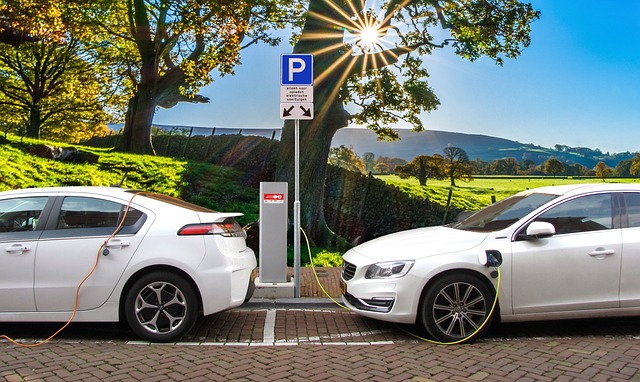
Sweden’s Northvolt has achieved a significant breakthrough by developing a sodium-ion battery with a density of 160 watt-hours per kilogram, comparable to some lithium iron phosphate batteries. The abundance of sodium and the similarity to lithium-ion technology make sodium-ion batteries a promising candidate for large-scale energy storage. However, further research and development are needed to optimize their performance before they can become a mainstream alternative.
An alternative to traditional lithium-ion batteries for electric vehicles is gaining traction. Sodium-ion batteries, which have been labeled a “rising star” in a study published by the U.S. government’s National Library of Medicine, are becoming increasingly closer to commercialization. BYD, a company based in China, is currently building a dedicated sodium-ion battery plant in eastern China. This plant has received a reported investment of $1.4 billion and is expected to have an annual capacity of 30 gigawatt-hours.
Sweden’s Northvolt recently made a breakthrough in the field of energy storage by developing a sodium-ion battery with a density of 160 watt-hours per kilogram. This puts it on par with some LFP batteries, which is quite impressive. The question now arises whether this technology could truly be a viable alternative or if it will end up fading into obscurity like many other innovations.
One of the key advantages of sodium-ion batteries is the abundance of sodium. It can be found in rock salts and brines, making it widely available across the globe. In fact, a study published in ScienceDirect highlighted the abundance of precursor materials for sodium-ion batteries in certain regions.
In terms of its functionality, sodium-ion batteries work much like lithium-ion batteries. During the charge and discharge cycles, charge-carrying sodium ions move from the cathode (positive electrode) to the anode (negative electrode) and vice versa. This similarity to lithium-ion batteries makes sodium-ion technology more familiar and easier to integrate into existing energy systems.
With these factors in mind, the breakthrough made by Northvolt could have significant implications for the future of energy storage. The abundance of sodium and the similarity to lithium-ion technology make sodium-ion batteries a promising candidate for large-scale energy storage. However, further research and development are needed to optimize the performance and reliability of these batteries before they can become a mainstream alternative.
In an interview with Bloomberg New Energy Foundation’s senior energy storage expert, Evelina Stoikou, it was explained that sodium-ion batteries have the potential to address the drawbacks of lithium-ion batteries. These drawbacks include the risk of thermal runaway and limitations on operating temperatures. Additionally, the cost of sodium hydroxide, a crucial raw material for sodium-ion batteries, is significantly lower than lithium-hydroxide.
Stoikou highlighted that the emergence of sodium-ion batteries gained attention when lithium prices were soaring due to supply chain disruptions caused by Covid-19 and the conflict in Ukraine affecting the nickel market. Under these circumstances, there was a favorable environment for sodium-ion batteries to gain momentum.
After consistently falling for several years, the prices of lithium-ion battery packs increased in 2022. However, there has been a significant change since then – the prices of lithium-ion batteries are now at a record low. According to BNEF, it is expected that these prices will further decrease and fall below $100/kWh by 2027.
Stoikou explains that sodium-ion generally competes with LFP (lithium iron phosphate). Both sodium-ion and LFP have lower energy density when compared to nickel-based chemistries. This makes sodium-ion more suitable for applications that do not require high energy levels. Stoikou further adds that due to the low energy density, sodium-ion batteries could have a larger role in stationary storage and smaller vehicles with lower range requirements.
Stoikou stated that cost competitiveness is one of the key factors that will determine the success of sodium-ion technology. He mentioned that if lithium prices continue to decrease significantly, and lithium iron phosphate (LFP) batteries become more affordable, it will make it more difficult for sodium-ion batteries to compete. The press release mentioned that BYD plans to use the batteries from its upcoming sodium plant in “microcars.” On the other hand, the U.S. government, major battery manufacturers, and carmakers are focusing their financial resources on localized lithium-ion battery production. This emphasis on lithium-ion batteries could overshadow the potential of sodium-ion technology as a competitor.
Stoikou said that companies like BYD and Northvolt, even though they have reached the later stage of commercialization with sodium-ion, will not directly compete with lithium-ion. This is because lithium-ion is a more mature product. Additionally, the nature of driving in the West, particularly in the U.S. and Europe, is different from China. People in the West drive longer distances and have bigger cars, making lithium-ion batteries a better fit for their needs.
Instead, Stoikou believes that advancements in lithium-ion and its subcategories will continue to be the norm for many years to come. This includes advancements in technology at the cell and pack level, as well as advancements in cathode and anode materials. For example, there may be advancements in incorporating silicon into graphite or even the development of solid-state electrolytes.
For the time being, the broader prospects of sodium-ion technology appear to be rather constrained. However, it may find its niche in energy storage and microcars.
Sodium-ion batteries are emerging as a potential alternative to traditional lithium-ion batteries for electric vehicles. Companies like BYD in China and Northvolt in Sweden are investing in the development of sodium-ion battery technology. The abundance of sodium and the similarity to lithium-ion technology make sodium-ion batteries promising for large-scale energy storage, but further research and optimization are needed. Sodium-ion batteries may find their niche in energy storage and microcars, but lithium-ion technology is expected to continue dominating the market for the foreseeable future



